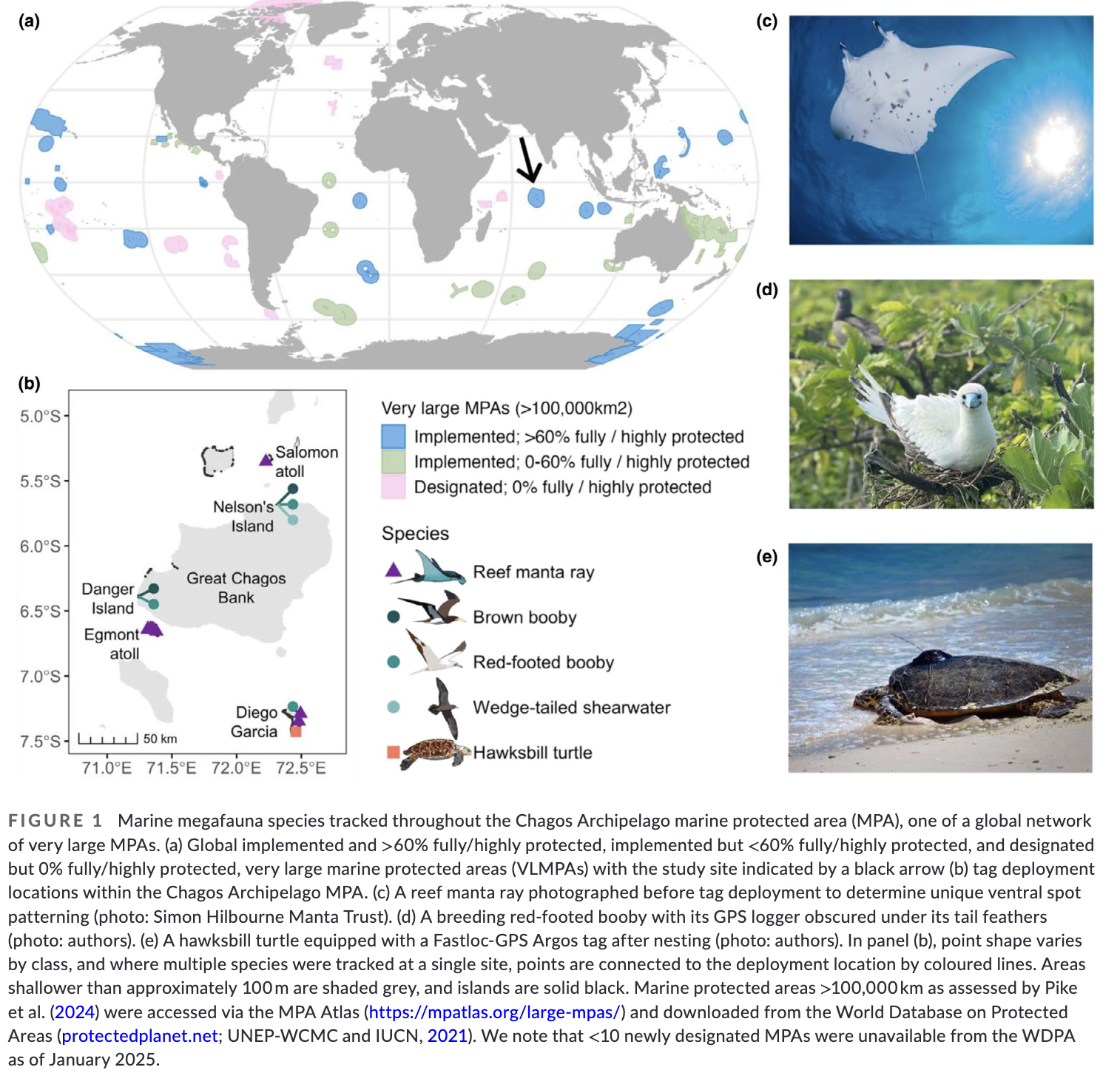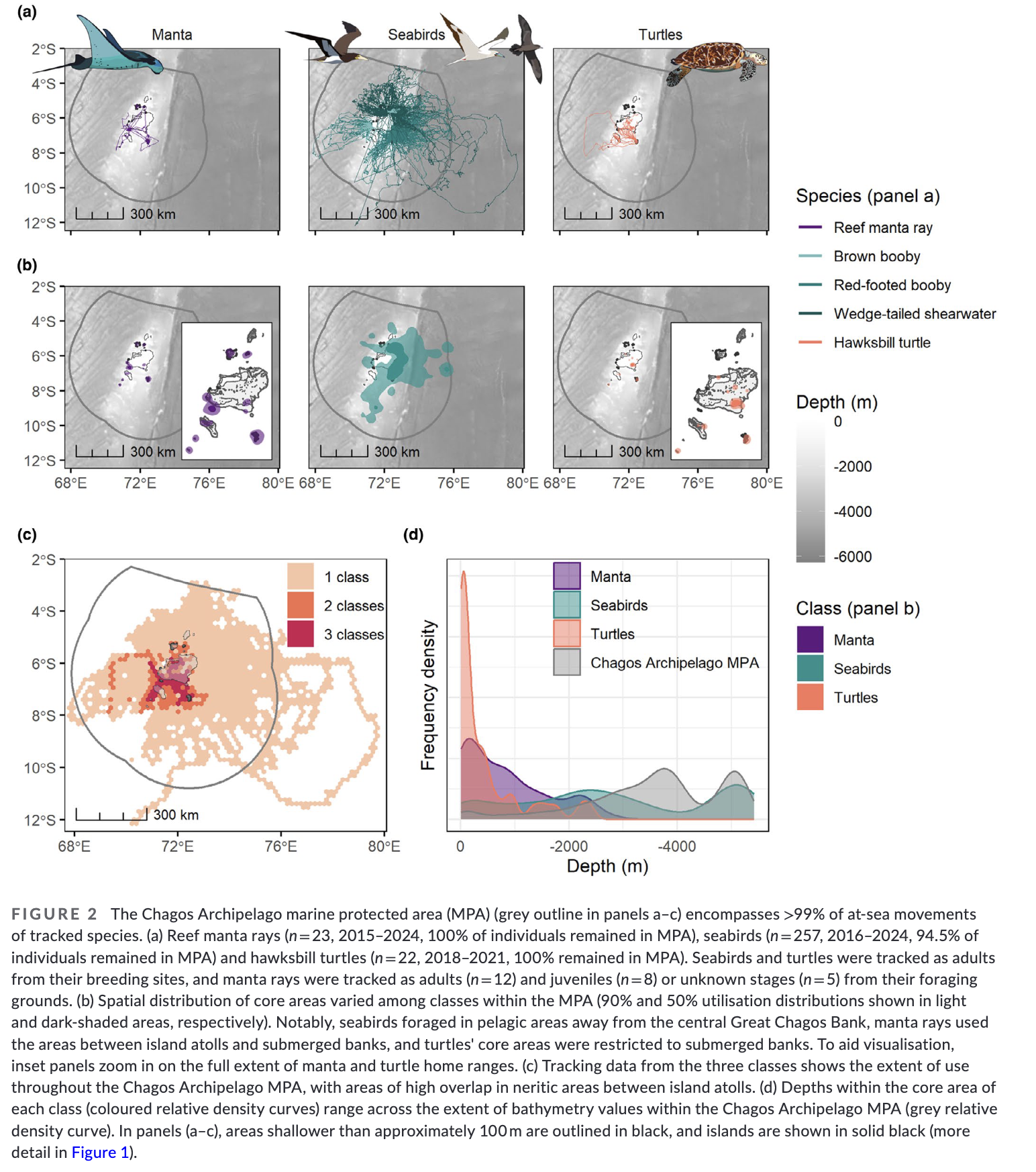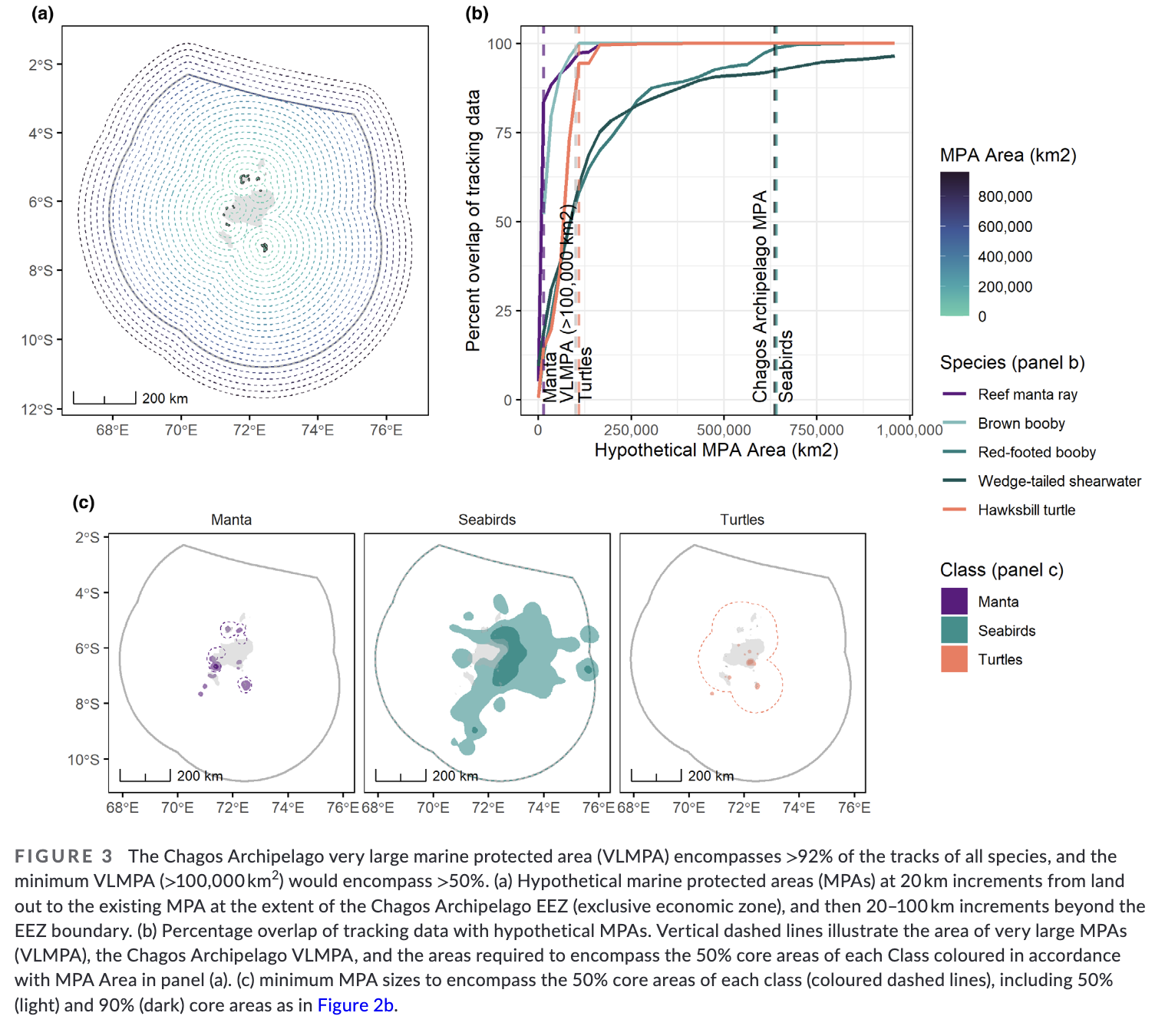Large marine protected areas can encompass movements of diverse megafauna
6 August 2025
Alice M. Trevail, Ruth E. Dunn, Peter Carr, Nicole Esteban, Robin Freeman, Joanna L. Harris, Malcolm A. C. Nicoll, Nia Stephens, Guy M. W. Stevens, Stephen C. Votier, Hannah Wood & Graeme C. Hays
Keywords: Biologging • Chagos Archipelago • Manta Ray • Marine Conservation • Movement Ecology • MPA • Seabirds • Turtles



Summary: This study evaluates the conservation value of the Chagos Archipelago Very Large Marine Protected Area (VLMPA, 640,000 km²) in the Indian Ocean for mobile marine megafauna. Tracking data from hawksbill turtles, reef manta rays, and three seabird species revealed that 95% of individuals’ foraging, breeding, or migration occurred within the VLMPA, despite varied habitat preferences. Simulations showed that even the minimum VLMPA size (>100,000 km²) would protect most manta ray (97%) and turtle (94%) locations, but fewer seabird sites (59%) due to pelagic behaviour. The findings demonstrate VLMPAs’ effectiveness in safeguarding diverse species and advancing the goal of protecting 30% of oceans by 2030.
Abstract
“1. Global calls for greater ocean protection have sparked renewed interest in very large marine protected areas (VLMPAs, >100,000 km2) to achieve management targets; however, their conservation value is debated.
2. We assessed the suitability of a VLMPA (640,000 km2) in the Indian Ocean for capturing the movements of resident mobile marine megafauna. We found that 95% of foraging, breeding and/or locally migrating individuals occurred within the VLMPA despite variable habitat use; adult hawksbill turtles (Eretmochelys imbricata, n = 22, 6124 tracking days) foraged on mesophotic banks (>30 m depth), reef manta rays (Mobula alfredi, n = 23, 652 tracking days) used shallow submerged banks, and seabirds (red-footed boobies Sula sula, brown boobies Sula leucogaster, wedge-tailed shearwaters Ardenna pacifica, n = 257, 1084 tracking days) collectively foraged throughout coastal to pelagic waters.
3. To understand the size of MPA necessary to encompass resident mobile species, we assessed overlap with smaller and larger hypothetical MPAs. An MPA meeting the minimum threshold of a VLMPA (>100,000 km2) would encompass 97% of manta and 94% of turtle locations, and 59% of all seabird locations because of their more pelagic distribution.
4. Synthesis and applications. Our results provide clear evidence for the value of the large scale of the Chagos Archipelago very large marine protected area for protection of taxonomically diverse mobile megafauna. Further, we highlight the value of the VLMPA approach as a strategy towards achieving 30% ocean protection by 2030.”
Funding
Bertarelli Foundation
Author Affiliations
University of Exeter
Heriot-Watt University
Lancaster University
Zoological Society of London
Swansea University
The Manta Trust
University of Plymouth
RSPB Ramsey Island
Deakin University
Contribution towards the Manta Trust's Strategic Plan
Goal 2: Strategic Objective 2.2 - Regulations and effective enforcement exist to reduce manta and devil ray capture and bycatch mortality in geographical focus areas.
Goal 3: Strategic Objective 3.2 - Key manta and devil ray aggregation sites in the regions where we work fall within protected areas that are effectively managed.
Goal 3: Strategic Objective 3.4 - The environmental drivers on manta ray populations are better understood to help determine the impact of the climate crisis and inform conservation measures.

